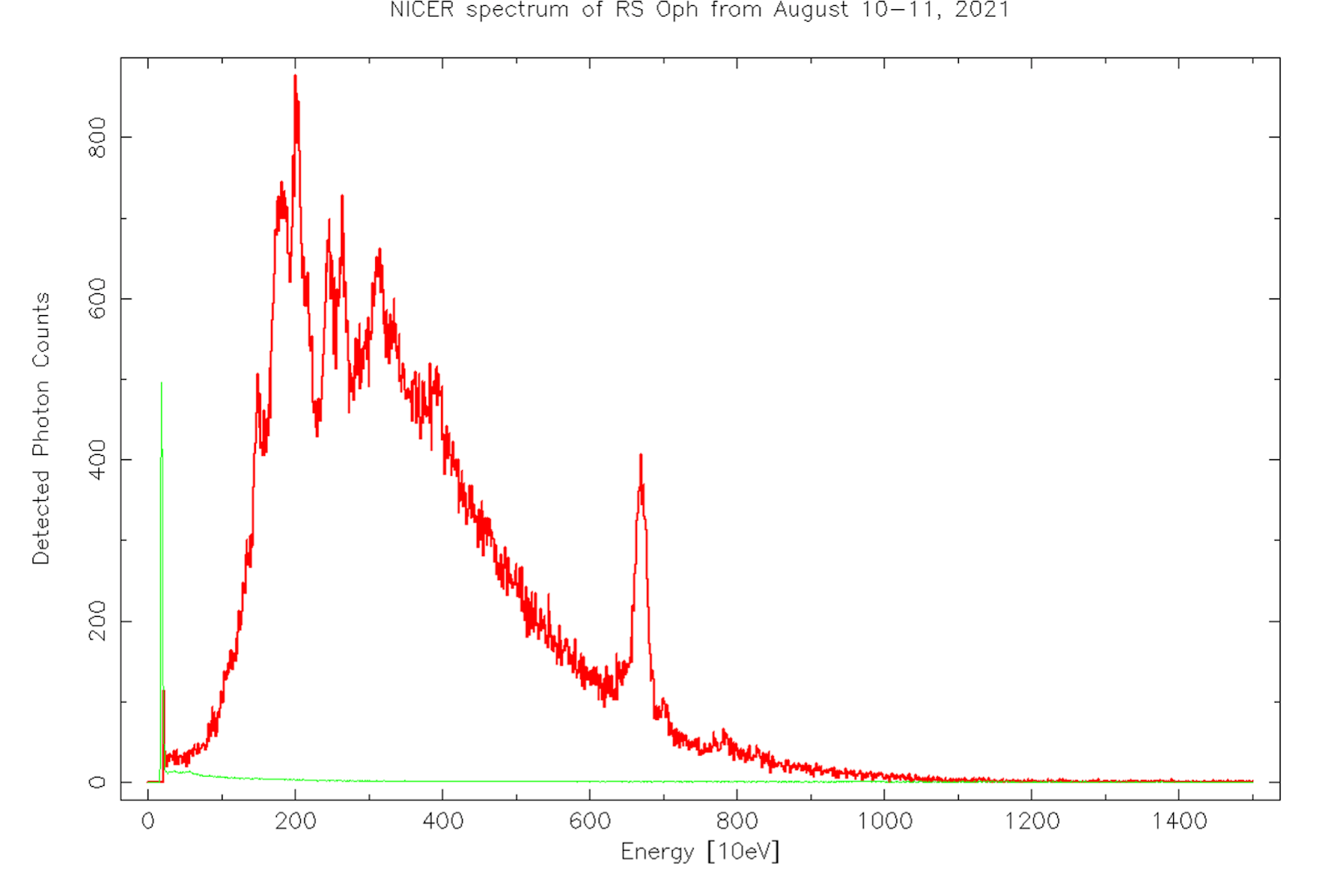NICER / ISS Science Nugget
for August 12, 2021
NICER Observes the Rare Recurring Nova RS Ophiuchi
During the period of August 8-9, 2021, the star RS Ophiuchi (RS Oph for short), underwent a bright outburst and is now visible to the naked eye. This outburst was first detected by amateur astronomers in Ireland and Brazil, and has since been detected by NASA's Fermi gamma-ray observatory as well as the ISS MAXI X-ray monitor. RS Oph is a type of nova; a binary star system consisting of a white dwarf star and another regular star, called the "companion star". Matter from the companion star fills an accretion disk that surrounds the white dwarf, which then feeds that matter onto the white dwarf star. As the accreting matter builds up on the dwarf star's surface it compresses to a critical density and ignites in a thermonuclear explosion that can be seen across the electromagnetic spectrum.
In most novae, the process repeats itself over many millennia. RS Oph belongs to a special subset called recurrent novae in which the recurrence timescale is of order decades, allowing astronomers to observe the systems before, during, and after the explosion. Only about 10 such systems are known in our Galaxy, so the opportunity to observe explosions in these systems is very rare. In addition, the companion star in this system is a red giant star, a star that is reaching the end of its lifetime, making RS Oph even more unusual.
NICER began observing RS Oph on August 10th and detected an exciting spectrum (see figure), with emission line features providing information about the makeup and speed of the material being ejected from the surface of the white dwarf. NICER has seen the spectrum evolve with time over the past day and will continue to monitor this event over the next month or longer. The initial NICER result is reported in an Astronomers Telegram 14850 by Enoto et. al.
The NICER X-ray spectrum can be used to infer the velocity of material being blown out by the explosion. Initial indications are that NICER can detect the slowing of this matter over just the past day.

Figure: The X-ray intensity of RS Oph as a function of energy as measured by NICER shows a rich collection of X-ray lines including a prominent iron line structure above 6 keV. The red curve shows the detected spectrum, while the green curve is an estimate of the background.
<< Previous
Main Index
Next >>